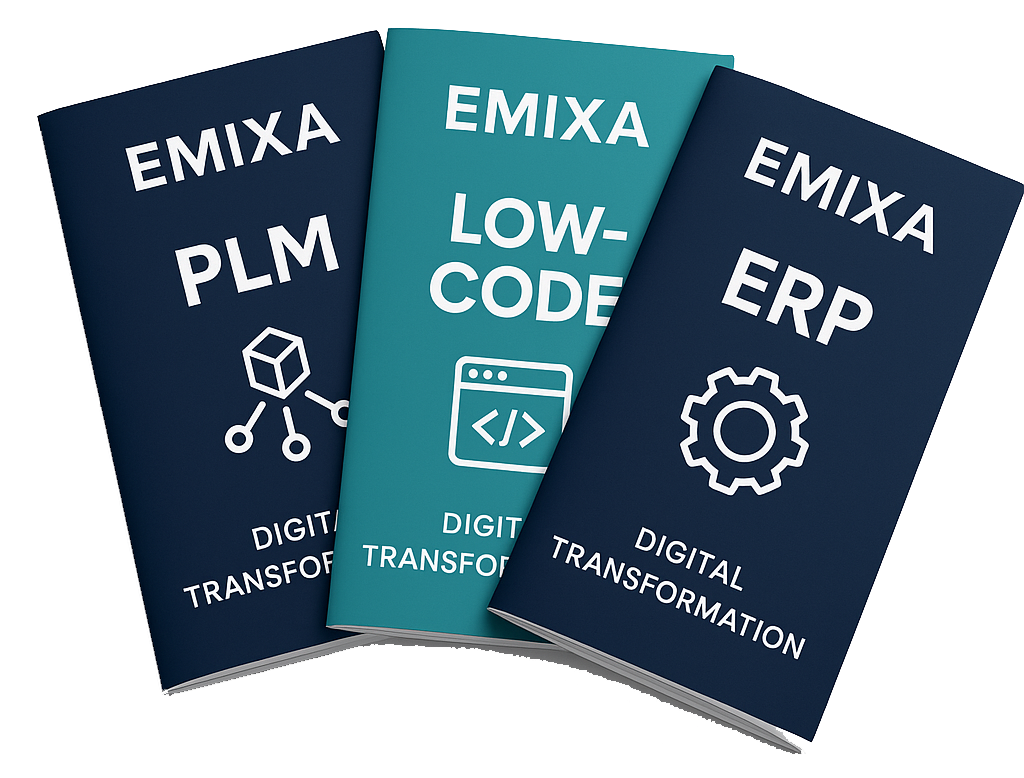
- Data Analytics
- ERP Software
5 Questions About SAP Business Data Cloud: The Collaboration Between SAP and Databricks

SAP and Databricks have recently launched SAP Business Data Cloud (BDC), a powerful data solution. Designed for businesses that use SAP and want to make better use of their data. It allows companies to seamlessly combine operational SAP data with the modern Databricks platform.
As an official partner of both SAP and Databricks, Emixa has years of experience with both systems. Christian Schreurs explains the opportunities this solution offers and its impact on existing SAP systems.
1. What problem does SAP Business Data Cloud solve?
Many businesses aim to become more data-driven but are still relying on outdated SAP BW systems or legacy SQL servers. While these systems work well for traditional reporting, they lack the flexibility and power needed for modern analytics and AI applications. Integrating SAP data with modern Lakehouse platforms such as Databricks, Snowflake, or BigQuery is often expensive and time-consuming.
SAP Business Data Cloud bridges this gap. It provides a fully SAP-managed environment where SAP and non-SAP data are integrated seamlessly without unnecessary data duplication or complex migrations.
2. What exactly is SAP Business Data Cloud?
SAP Business Data Cloud is an integrated solution that unites SAP Datasphere, SAP BW/4HANA, and SAP Analytics Cloud with SAP Databricks. The latter is a specially managed version of Databricks within the SAP ecosystem.
In practical terms, this means you can leverage Databricks's AI and machine learning capabilities while keeping all your data within a secure, SAP-managed environment. SAP BDC offers pre-configured data products and dashboards, supports the Delta Sharing protocol for seamless data sharing without duplication, and delivers real-time, consistent insights.
For businesses with extensive SAP-driven data landscapes, this opens up the possibility of making faster, more informed decisions using real-time analytics.
3. Why is this big news?
SAP Business Data Cloud is a fully integrated cloud platform where SAP solutions are directly connected to a SAP-managed version of Databricks. This means businesses can securely harness AI and machine learning capabilities without moving data outside the SAP environment.
SAP BDC builds upon the previously introduced Business Data Fabric concept in SAP Datasphere but adds enhanced integrations and ease of use. The Business Data Fabric approach eliminates the need to copy data to a central location. Instead, data remains accessible across multiple sources simultaneously. This is a technique known as federated data access. It reduces duplication, lowers costs, speeds up processes, and simplifies maintenance.
With SAP BDC, businesses can work within a single modern and scalable environment. If you're looking to modernise SAP data without major migrations, this is an excellent solution.
4. What does this mean for existing SAP solutions?
Contrary to some assumptions, SAP BDC does not replace SAP Datasphere. Instead, it integrates with it - as part of a broader platform. SAP Datasphere and SAP Analytics Cloud remain the essential components of BDC, ensuring businesses' existing investments are protected.
For companies using SAP BW, SAP BDC offers a migration path. SAP BW 7.5 and BW/4HANA will be supported until 2030 and 2040, respectively. However, SAP advises moving to SAP BW Private Cloud Edition (PCE), which integrates fully with BDC. This allows businesses to continue using their current systems while gaining access to new AI and data-sharing capabilities. Rather than replacing existing SAP solutions, SAP BDC enhances and modernises them.
5. What does this mean for my company?
If you're wondering whether SAP BDC is the right solution for your business, we recommend following Emixa's structured FAST approach:
- Fact-Finding. Assess the current data and AI architecture. This includes analysing existing systems, data structures, and integrations while evaluating the organisation's data and AI maturity. We always make sure that we involve your people by interviewing teams and organising a workshop to gather key requirements.
- Assessment. Compare SAP BDC with alternative solutions, such as SAP BW, SAP Datasphere, or other Lakehouse platforms. Make sure to not just look at the tools but also at the business processes. At Emixa, we always evaluate the impact on existing processes - and costs.
- Solution Blueprint. Design a future-proof data architecture that will best support your company's situation. At Emixa, we also detail how this integrates into your business processes, IT systems, and the organisation as a whole.
- Transformation Planning. Develop a roadmap for implementation and adoption. A gradual migration often reduces risks and maximises benefits, but some cases may require a faster transition.
Of course, we can also support the implementation of your chosen solutions. Ensuring both business and IT teams are prepared for the change. Ultimately, whether SAP BDC is the right solution depends on your organisation's specific needs.
Get in touch
As an official partner, Emixa combines deep SAP and Databricks expertise with extensive experience in digital transformation. We provide both technical guidance and support for organisational and process change.
Want to discuss your specific situation? We're here to help!
Author: Christian Schreurs
Published date: August 26, 2025

Explore our Technology. Access our downloads center.
Access NowStart your Digital Transformation with Emixa

We help businesses transform their digital future with cutting-edge technology and strategic products & services


